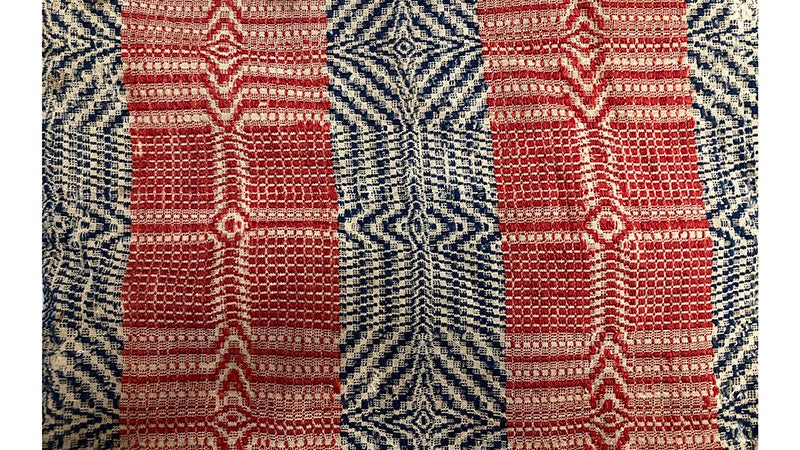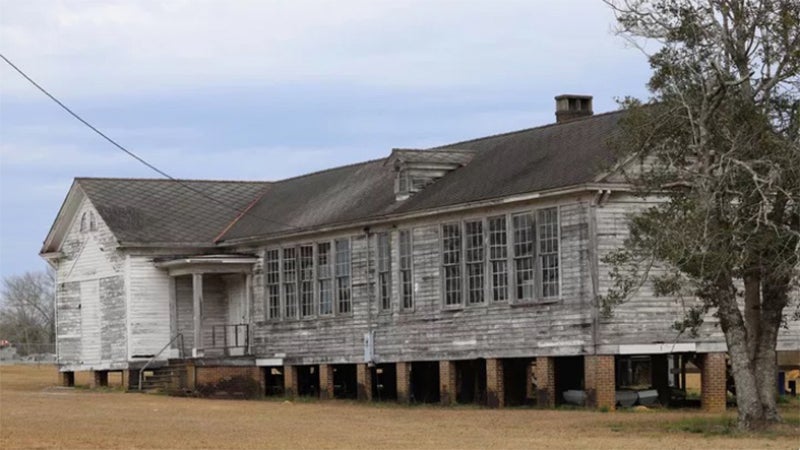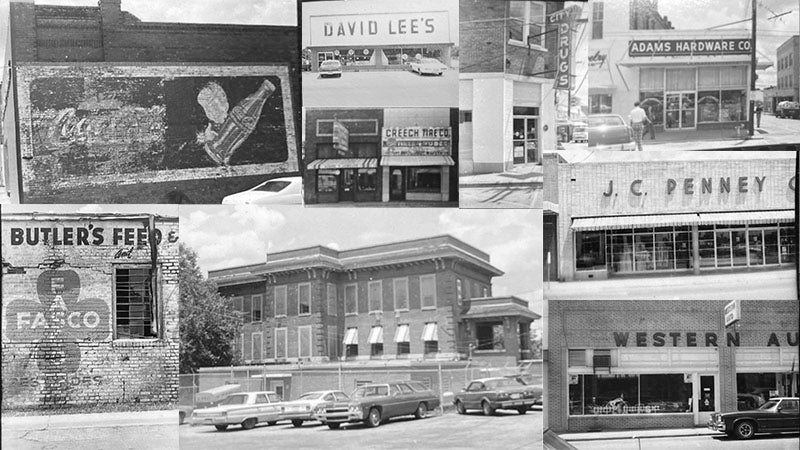Remember When: Post-war prosperity in 1949
Published 1:54 am Saturday, March 30, 2019

- The Alatex Executive Offiice building in 1949. A cutline to this photograph in The Star-News read, “In this modern brick building are administered all the business affairs of plants in Andalusia, Brantley, Crestview and Panama City, as well as The Andala Company, Enterprise Manufacturing Company and Troy Textiles, Inc. Interior of the structure is finely appointed both for comfort and for efficient office operations. It is here that Mr. J.G. Sherf maintains his office.” Courtesy Photos
Post-war prosperity got underway in the years following the end of World War II. Cars got bigger with an average cost of $1,420. RCA perfected the broadcast of color television. The first Polaroid camera cost $89.99 on the market. The first 45 rpm record was introduced. Afternoon tv serials were called “soap operas” because soap manufacturers sponsored the shows. The “South Pacific” musical was debuted on Broadway. Bing Crosby’s song “Dear Hearts and Gentle People” was one of the top hits on the radio.
In the Spring of 1949, things were buzzing in Andalusia and Covington County including fund raising for the Red Cross, civic club meetings, bridge parties, new businesses opening their doors, new construction underway, school plays and band concerts, Andalusia Arrow baseball games, political rallies, spring clean-up campaigns, and church gatherings.
April 7, 1949 – “Building Permits Okayed for 24 – A total of 24 building permits were issued in the month of March 1949 by the City Building Inspectors, McDonald, Hooper, and DeJarnette including a $4,800 certificate of approval for the members of St. Mary’s Episcopal Church. Also, a $22,480. permit for the erection of the new Church Street swimming pool was issued (to the delight of many parents and children in Andalusia).”
April 21, 1949 – “Electric service to a total of more than 400 new patrons has been added in the past month by the Covington Electric Cooperative, officials have announced. This brings to 1400 the new consumers that have secured current since the first of December. Co-op officials added that farmers and potential patrons seeking service should not be disheartened because they were not included in the most recent expansion. Another 300 miles will be added and applications should be filed with the Covington Co-op offices in Andalusia now by individuals desiring service.”
March 24, 1949 – “One appliance dealer in Andalusia recently sold 5 carloads of refrigerators in 2 weeks following REA electric lines that were being energized.”
That appliance dealer was most likely Benson and Company since a lot of advertising about their Frigidaire refrigerator was prevalent in the Andalusia Star News in the Spring of 1949.
“Your Dream Dress for Easter…..a Special Little Price! $5.90 and $8.90 At Penney’s”
Remember when – The original J. C. Penney building was located on South 3-Notch Street across from the present public library. Back then it was across from the post office. Built in 1939 by Andalusia Development for G. S. Waits, Sr., Penney’s was one of the town’s first chain department store. It featured a “modern” carrier cup system with a sales slip clip that ran upstairs to a central cashier.
Following Mr. Waits’ death, Mrs. Waits later built a second building for J. C. Penney on East Three Notch Street where they relocated to in the mid 1950s. “J. C. Penney” wording can still be seen today in the South 3-Notch Street entrance way in the miniature ceramic tiles, threshold-style. Check it out when you go in for coffee and a sandwich at the Surly Mermaid and Joe’s Barista.
The Alabama Textile Products Corporation (Alatex) was celebrating the 20th anniversary of the founding of the textile industry. A special edition of the Andalusia Star News included ads of well-wishers who supported the efforts of the textile business.
The caption of the picture published in March 1949 of the beautiful main office building of Alatex reads “In this modern brick building are administered all the business affairs of plants in Andalusia, Brantley, Crestview, and Panama City as well as the Andala Company, Enterprise Manufacturing Co., and Troy Textiles, Inc. The interior of the structure is finely appointed both for comfort and for efficient office operations. It is here that Mr. J. G. Scherf maintains his office.”
Today this handsome and historic building is the headquarters for the industrious Andalusia Area Chamber of Commerce. Visit this landmark if you have never been before.
March 24, 1949 – “Andy Hi Annual Got Its Start In 1929, Too – The year 1929 that marked in Andalusia the conception of the Alatex was the year in which Andalusia High School students decided that they should have a yearbook. The Covington News reporting the decision to publish the annual said there was evident a fine progressive spirit among the school students. The class has proceeded to elect a staff upon whose shoulders will fall the very large responsibility of producing this worthy undertaking.”
“The following staff which includes some of the brightest minds among high school students was selected for the task, and they have already entered upon the work of planning this publication.”
The staff members are Rebecca Darling, Editor-in-Chief; Georgia Lowman, Business Manager; Rebecca Riley, Subscription Manager; James Ward, Treasurer; Mary Clyde Brawner, Associate Editor; Mary Albritton, Assistant Business Manager; Bernice Dawkins, Art Editor; Grace Bullard, Associate Editor; and Elizabeth Tilley, Assistant Subscription Manager. Other members of the staff will be added later.”
Apparently, the name of the “Memolusia” had not even been chosen yet, but the rest is school history. The only time the “Memolusia” was not published thereafter was during the World War II years. Most of those editions are housed in the AHS Heritage Room. It is interesting to see how the later generations of those listed above, children and even grandchildren, continue on as students, staff members, and teachers carrying on the traditions at Andy High.
March 24, 1949 – “Yes, how would it be if your house was blown to splinters? One moment, you are seated around your breakfast table in a happy family circle. Then, within less than sixty seconds your home is in a shambles, your wife and children badly battered, you yourself a victim of a painful injury that necessitates hospitalization.”
“Don’t say it could not happen here. It did and not less than a month ago near Loango. A family was stricken – all household belongings and most of their clothing literally gone with the wind in a tornado.”
“Within less than a week, the Red Cross had put out a generous helping hand. More than $400. was provided from the agency’s national treasury to help that family meet the minimum requirements to rehabilitate themselves.”
“We remind you of this now that the campaign to raise funds here locally is at its height. It is a cause that must not be overlooked. For more than 67 years, the American Red Cross has meant sympathy, compassion, and help in time of need to our people. The movement is a powerful symbol in this country of man’s humanity to man, of man’s universal compulsion to aid the suffering and distressed.”
March 24, 1949 – “Drug Store Theft – City police are maintaining a vigilant watch of certain persons seen in the M. H. O’Neal Drug Company (on the Square) Sunday morning in an effort to trap the thief who rifled the firm’s cash register of $146. in bills. The robber apparently came into the drug store as a customer between 9:00 a. m. and 11:00 a. m. and hid in the basement or rear of the building and then did his stealing after the business was locked up before the church hour. The back door of O’Neal’s Drug Store was found unbarred after the robbery was discovered. Ordinarily this door is not used on Sunday mornings when the drug store is open for only two hours.”

The birthplace of Gov. James E. “Big Jim” Folsom, which was relocated from the Tabernacle community to downtown Elba in 2002.
March 24, 1949 – “Governor Greets Old Friend Here – The man who went to call the doctor the night ‘Big Jim’ Folsom was born got a hearty handshake from the Governor here last Friday night. Before the crowd gathered in the Covington Court Room, John Williams stepped from a front row to speak to Folsom. Williams who is on the old age pension rolls, got a big smile and a warm greeting from Folsom. Williams’ family lived near the Folsom family, a few miles from the Elba City Limits at the time of the Governor’s birth.”
“On the night ‘Big Jim’ was born, Williams hurried to Elba to summon the physician who was in attendance when the stork arrived with James E. Folsom.”
I wonder if Folsom’s string band accompanied him to Andalusia in 1949 for the rally as it usually did. Can’t you just hear that song resounding on the brick and marble halls of the courthouse! “Hail, hail, the gang’s all here for the ‘Alabama Jubilee!’”
On a recent Sunday afternoon drive to Elba, I photographed the Folsom birthplace which was moved from the Tabernacle Community into downtown Elba in 2002. The historic marker on site states that the house is a good example of a late 19th century farmhouse. Born October 9, 1908, Folsom was twice governor of Alabama (1947-51 & 1955-59).
“His Aim To Make Life in Alabama Better For Every Citizen” is the inscription on the stone marker in the yard of the tin-roofed structure. When I drive down Antioch Road to my home, I am glad that “Big Jim” has a legacy of paving many of the farm-to-market roads in Alabama during the years he was in office.
Remember when that profound statement was uttered around 1924 at the time Dr. Wilbur Sawyer of the World Health Organization in New York City visited Andalusia studying hookworms and malaria. He wrote a letter to his wife back home in NYC saying, “You can build a marble courthouse, but you can’t keep off the spit!”
Yes, Springtime in Andalusia 70 years ago (1949-2019) was quite a time for the bustling little town about to bloom! I have always heard “Bloom where you’re planted,” and so many have just done that. Let’s continue to bustle around this Spring and make our hometown and county a great place to live!
Sue Bass Wilson, AHS Class of 1965 and long-time member of the Covington Historical Society can be reached at suebwilson47@gmail.com.





